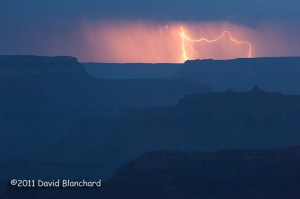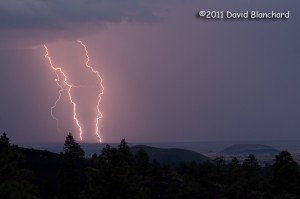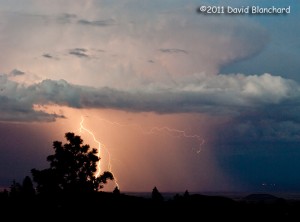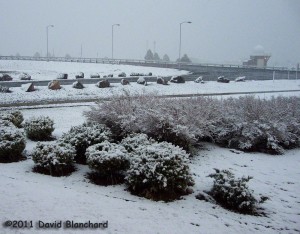The North American Monsoon (NAM) is in full swing across the southwestern states and the daily showers and thunderstorms present many opportunities for dramatic lighting and lightning.
Earlier this week I traveled to the south rim of Grand Canyon National Park hoping to get some sunset images with storm clouds hanging over the canyon. Well, there certainly were clouds — and there wasn’t much of a sunset. The backup plan was to photograph lightning. On this count, the storms didn’t disappoint. There was a storm to the west and I was able to point the camera across the lines of cliffs and rock faces that were already falling into deep shadow in the late twilight. And off in the distance was a great flash of lightning.

A few days later I tried once again to capture twilight lightning — this time at Sunset Crater National Monument. A storm developed in early evening and moved to the northeast over the lower terrain of the Painted Desert in the Little Colorado River Valley.

In the foreground can be seen the Ponderosa Pine trees at the higher elevations in the Monument; in the middle distance are some of the many cinder cones that are a part of the San Francisco Volcanic Field; in the far distance are the lower elevations of the Painted Desert.

With the typical NAM lasting through early September there should be plenty of opportunities for more dramatic lightning photographs.

